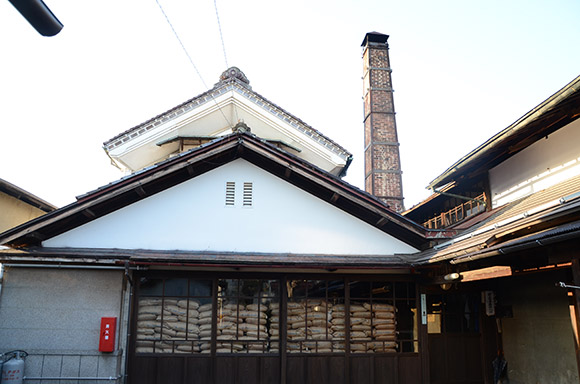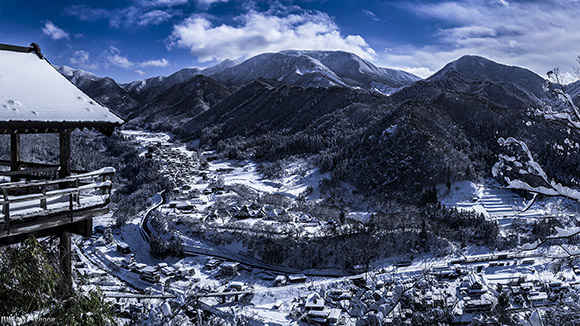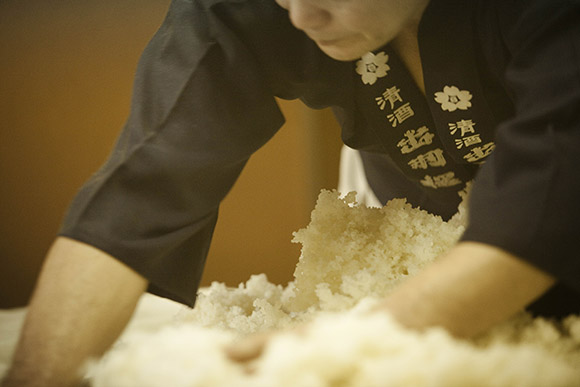出羽櫻
出羽櫻

History
Founded in 1892 by the Nakano family, Dewazakura celebrated its 120th anniversary in 2012. Past generations of the Nakano family came to own large tracts of farmland in Tendo City, Yamagata Prefecture, which eventually led them to establish a sake brewery. The brewery’s founders espoused “quality before quantity,” and this ideal has guided the company’s brewing philosophy ever since. Dewazakura’s long commitment to making ginjo premium sake has earned it top honors in Japanese and international competitions. In the Annual Japan Sake Awards, it continues a twelve-year winning streak of twelve gold medals over the past twelve years.
As the popularity of ginjo-class sake has grown, so have the accolades showered on Dewazakura’s signature ginjo sake, called “Oka.” The well-known sake publication “Regional Sake Popularity Ranking” has listed Dewazakura Oka as the most popular ginjo sake in Japan for the past twelve years. Oka’s alluring aroma even gained the attention of the cosmetics world, when Max Factor sought Dewazakura’s cooperation to develop the fragrance of its “SK-II” products. In 2011, Dewazakura was the first sake ever to be selected by London’s venerable Berry Bros. & Rudd, the oldest wine supplier to the British royal family. Dewazakura began exporting its products in 1999, and can now be enjoyed in 25 countries and 50 cities around the world.

Environment
Dewazakura is in Tendo City, Yamagata Prefecture, located 350km north of Tokyo—a three-hour ride on the bullet train from Tokyo Station. A relatively small town of 60,000, Tendo sits in a basin surrounded by mountains, a geography that generates summer heat in excess of 30C, and winter snows in excess of 1 meter. These extremes have also made the area famous for rice and fruit. It is the production center of the sakuranbo Japanese cherry, and the top producer of western pears known as “La France” in Japan.
High-quality rice, cold winters, and pure snow-melt water make Yamagata a perfect environment for premium sake production. Currently there are about 50 breweries scattered throughout Yamagata, each of whom make sake that reflects their own local environments.

Mission
Our highly-skilled and deeply-experienced brewers continue to make Dewazakura as they always have—by hand. We select rice only from trusted growers, and polish it ourselves. We polish away the outer layers of fats, minerals, and protein to create a light, clean, and refreshing taste. Our average polishing rate is very high, at 50% remaining of the original rice. We brew in batches small enough to allow our brewers to fine-tune critical aspects such as temperature. This limits our production capacity, but expands our ability to make high quality sake. It takes about 60 days to make our sake, from polishing to first filtering, and we make it as much by hand and at the highest quality level as possible.
Delivering this ginjo-class sake in top condition is also our responsibility. After filtering, we store all of our products at minus 5C in our own refrigerated storage facilities. Also, we were the first sake maker in Japan to adopt technology to eliminate oxygen from our products before low-temperature storage, which prevents oxidation and keeps the sake fresh throughout the year.

Sake character
Dewazakura decided many years ago that ginjo-class sake should not just be for competition, but for everyday enjoyment by regular people. In 1980, it started selling “Oka Ginjoshu” in the Japanese market at an affordable price. At the time, the word “ginjo” had only been used by sake experts, and was unknown to the general public in Japan. After Oka’s release, its fruity aromas and light-yet-tasty flavors became an instant hit and grew into what is now called the “Ginjoshu Boom” of the 1980’s. Dewazakura was there from the very beginning, and it is no exaggeration to say that now “Dewazakura” is synonymous with “Ginjo” in the public’s mind.
The beautiful, fruit-like aromas that define ginjo sake are easily lost when the product is pasteurized, so Dewazakura developed its own method for preventing that. Instead of pasteurizing before bottling, which is the usual method, Dewazakura bottles the sake without pasteurizing and refrigerates it until it’s time for release to the market. Pasteurization is done once just before release, and it is done by simply immersing every bottle in water heated to 65C. The bottles are capped with crown caps that easily bear the heating pressure, and prevent the ginjo aromas from escaping. This is a difficult way to do it, but it succeeds in keeping the best ginjo aromas and flavors for the customer.
















